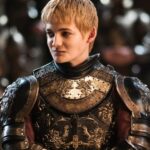Dany is lucky, though — she’s a natural. Jon clearly is not, probably because he hasn’t had the advantage of holding Rhaegal as an egg before it hatched, or knowing it all of its life. Dany had time to acclimate, to bond. And that bond is actually a form of imprinting, which enables Drogon to sense Dany’s distress in the fighting pits and come to her rescue. When Drogon is hit by a spear in the books, “Dany and Drogon screamed as one.”
The bond between a dragon and dragon rider runs so deep, some say, that the dragon will share its human’s feelings (the dragons of one royal couple also mated) and can sense when its human dies. Dreamfyre, for example, sensed when its rider, Helaena, died, even though she was far away.
Because of this bond, a dragon will accept only one rider, although it will accept a new one after the original rider dies. (None of these rules about bonding apply to Viserion, by the way, now that it’s a wight.) Maegor the Cruel had to wait until his father, Aegon, died before he could hope to claim Balerion the Black Dread.
The child of a rider, however, does not automatically inherit a deceased parent’s dragon. It’s not like borrowing the family car. Queen Rhaenyra’s son Joffrey tried to ride Syrax, and although he was a familiar presence to his mother’s dragon, the great beast fought to be free of him, twisting in the air until he fell off and plunged to his death. Joffrey might not have died if he had used the traditional saddle, chains or steel-tipped whip, but he was in a hurry, and he didn’t.
That’s another thing Dany didn’t realize — Jon might have had a slightly easier time if he had the proper tools. Or if Dany had taken him as a passenger first, letting him ride double with her before trying to ride solo on an untamed dragon. (She wouldn’t have been able to break in Rhaegal herself beforehand because a dragon won’t accept another dragon’s rider.)




















![[Book Review] The Blade Itself (The First Law Trilogy) by Joe Abercrombie](https://bendthekneegot.com/wp-content/uploads/2018/01/1516047103_maxresdefault-218x150.jpg)

















